8 Types of Bearded Dragons That Make Great Pets
This page contains affiliate links. We may earn money or products from the companies mentioned in this post through our independently chosen links, which earn us a commission. Learn More
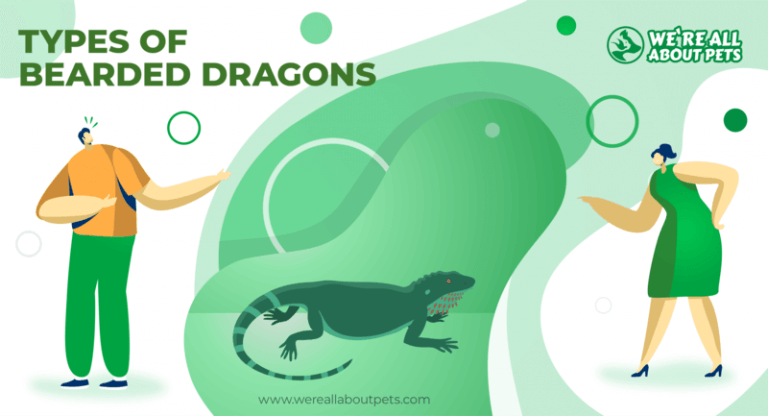
When you hear the word “dragon” you probably picture a giant scaly lizard breathing fire. The truth is that kind of dragon doesn’t exist, but there are others that do.
Bearded dragons are a type of desert-dwelling reptile known for their spikey bodies and the beard-like pouch around their throat that can be expanded when the lizard feels threatened. Though they may look intimidating, the bearded dragon actually makes for a fairly docile pet.
What type of bearded dragon is the best pet? Well, if you’re thinking about a bearded dragon as a pet, it’s important to do your research to understand what you’re getting into. Caring for a reptile is much different than a dog or cat, and bearded dragons have specific requirements in terms of their housing needs and diet. Unless you’re able to provide for these needs to the fullest, you may want to consider another pet.
In addition to making sure the bearded dragon is the right option for you, you also need to decide what type of bearded dragon you want.
Quick Navigation
8 Types of Bearded Dragons
The name bearded dragon actually refers to a group of lizard species in the genus Pogonas. Bearded dragons are semi-arboreal lizards found in the deserts, woodlands, and shrublands in Australia. There are eight different species of bearded dragon.
Here’s a quick overview of some of the most popular types of bearded dragon:
1. Eastern Bearded Dragon (Pogona barbata)
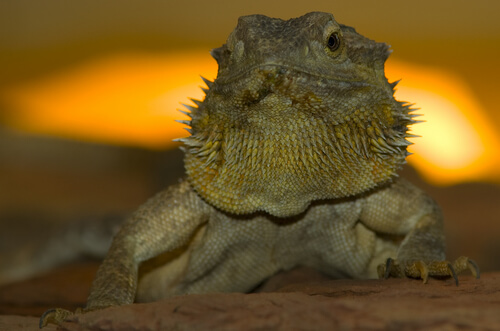
- Origin: Australia
- Price: $50 to $300
- Size: Up to 24 inches
- Color: Grey-black, reddish
Also known as the common bearded dragon, this species is typically found in the wooded parts of Australia. Eastern bearded dragons are sometimes also called frilly lizards or Jew lizards, though the former is usually a confusion between this and another dragon, the frill-necked lizard.
Eastern bearded dragons grow to about 24 inches in length, though females of the species are usually a little smaller around 20 inches. This species typically has a grey-black or reddish coloration with juveniles being paler in color than adults. Many bearded dragons of this type develop a subtle yellow, blue, o r pale green tinge on the forehead.
2. Rankin’s Bearded Dragon (Pogona henrylawsoni)
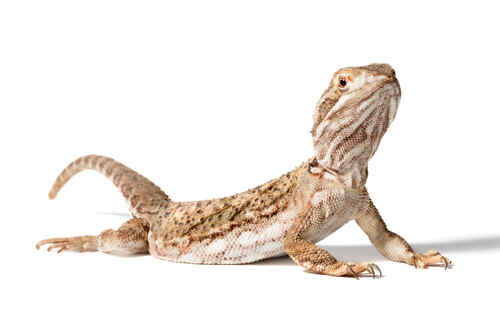
- Origin: Australia
- Price: $50 to $300
- Size: Up to 12 inches
- Color: Brown, reddish, grey
Also known as the pygmy bearded dragon, this species is native to Queensland, Australia. Rankin’s bearded dragon is similar to the Central bearded dragon but much smaller, only growing to about 12 inches in length. These dragons also have a shorter, blunter snout.
3. Kimberley Bearded Dragon (Pogona microlepidota)
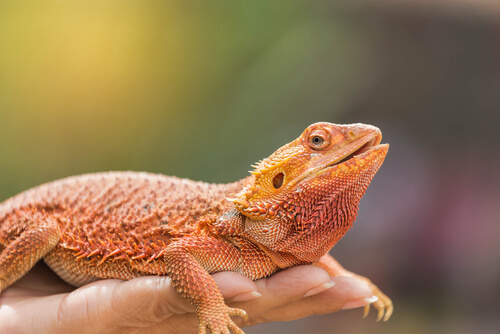
- Origin: Australia
- Price: $50 to $300
- Size: Up to 14 inches
- Color: Brown, reddish, yellow
Also known as the small-scaled bearded dragon, the Kimberley bearded dragon has a smaller frill around its neck than other bearded dragon types. This species is found in Western Australia and typically grows to a length of up to 14 inches. Little is known about this species compared to the others.
4. Abrolhos Dwarf Bearded Dragon (Pogona minor minima)
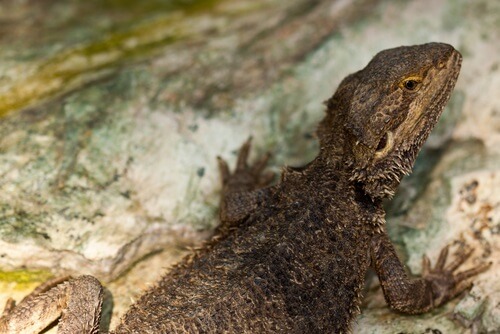
- Origin: Australia
- Price: $50 to $300
- Size: Up to 14 inches
- Color: Grey-brown
Found only on the islands at Houtman Abrolhos, this bearded dragon is much smaller than its related subspecies. Measuring only about 4 ½ inches long from snout to vent, these lizards have an additional tail length up to 10 inches. This species is restricted to three islands of the Wallabi Group: North Island, East Wallabi Island, and West Wallabi Island.
5. Dwarf Bearded Dragon (Pogona minor minor)
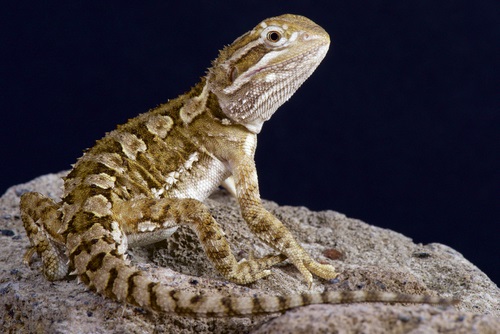
- Origin: Australia
- Price: $50 to $300
- Size: Up to 15 inches
- Color: Grey-brown
Found along the southwest coast and the interior of Western Australia, the dwarf bearded dragon also has a subspecies which is confined to the Wallabi Group of islands. This bearded dragon type is fairly large, despite the name, but is smaller than the Central bearded dragon, averaging 14 inches in length.
This bearded dragon type is a little different than other species in terms of dietary habits, largely because of its smaller size. While many bearded dragons are herbivorous, this species is insectivorous.
6. North-West Bearded Dragon (Pogona mitchelli)
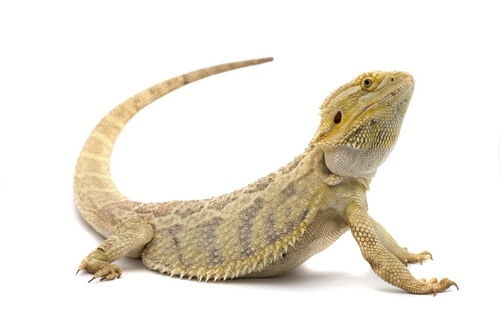
- Origin: Australia
- Price: $50 to $300
- Size: Up to 18 inches
- Color: Brown, red, yellow
Often nicknamed Mitchell’s bearded dragon, this species grows up to 18 inches in length. This bearded dragon type is found in several different habitats including semi-tropical woodlands and desert, primarily in northwestern Australia. This species is not commonly seen in the pet trade.
7. Nullarbor Bearded Dragon (Pogona nullarbor)
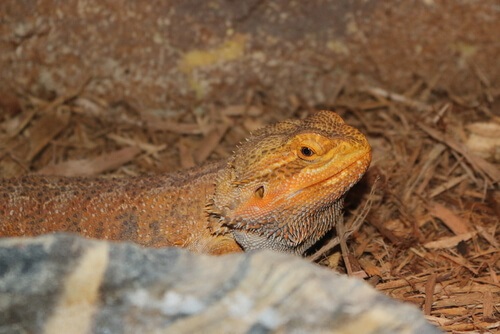
- Origin: Australia
- Price: $50 to $300
- Size: Up to 14 inches
- Color: Brown, red, yellow
Another of the less common species, the Nullarbor bearded dragon can be found in Southern Australia where it tends to inhabit flat brushlands. This species grows to an average length up to 14 inches long.
8. Central Bearded Dragon (Pogona vitticeps)
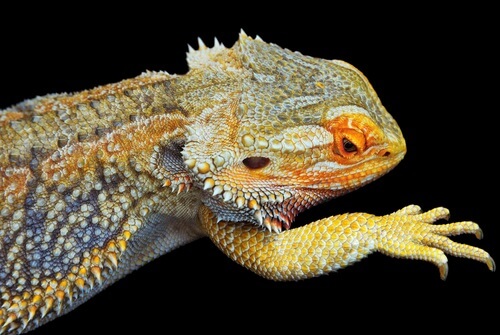
- Origin: Australia
- Price: $50 to $300
- Size: Up to 24 inches
- Color: Brown, red, yellow
The most common species of bearded dragon kept as pets, the Central bearded dragon grows up to 24 inches long with its tail accounting for half its length. This species doesn’t exhibit strong sexual dimorphism, though males have a wider cloacal opening than emails and a wider tail base.
Central bearded dragons vary in color, typically exhibiting various shades of brown, red, yellow, white, and orange. These lizards are typically found in the semiarid woodland, arid woodland, and rocky desert regions of central Australia. They are excellent climbers and tend to spend their morning sunning themselves on exposed rocks or branches, retreating into a shady area or a burrow in the heat.
The Benefits of Owning a Bearded Dragon
Affectionately referred to as “beardies,” bearded dragons are wonderful pets. Not only are they extremely unique and good to look at, but they are usually social and fairly easy to tame.
Here are some of the benefits of bearded dragons as pets:
- Bearded dragons tend to be gentle and social by nature, not to mention being very easy to tame. They can also get along with other household pets that don’t chase them.
- They come in a wide range of colors and patterns, some with surprisingly bright colors.
- Once your bearded dragon cage is set up, you don’t have to do a lot of work to maintain it – a network of automatic timers will keep things running smoothly.
- Bearded dragons can be trained to some degree, and many owners find they can almost potty-train their pets to do their business in the same area of the tank for easy cleaning.
- Compared to many reptiles, bearded dragons are not prohibitively expensive or difficult to find.
- The bearded dragon is a reptile that develops its own unique personality which adds an extra layer of satisfaction to being a pet owner.
Another potential benefit of the bearded dragon is its long lifespan. While many pet lizards live just 3 to 5 years in captivity, the bearded dragon can live 8 years or more. If you purchase your pet as a juvenile, you can experience the joy of getting to know your bearded dragon and keep him for many years.
What to Know Before Getting a Bearded Dragon
Bearded dragons are desert-dwelling reptiles. They are omnivores which means they eat both plants and animals, though the majority of their juvenile diet is made up of insects. Your bearded dragon’s habitat and diet should mimic what he’d have in the wild, so keep that in mind when decorating your terrarium and choosing the right substrate.
The most common species of bearded dragon in the pet trade is the central bearded dragon (Pogona vitticeps), though smaller species like Rankin’s bearded dragon (Pogona henrylawsoni) are popular as well. Not only are there several species of bearded dragon to choose from, but many color morphs too.
Here are some of the most popular color morphs for bearded dragons:
- Classic (Standard) – This is the color morph most similar to the wild bearded dragon. Standard bearded dragons come in a variety of colors including tan, yellow, and red.
- Hypomelanistic – This color morph exhibits “below normal color,” so they look almost like a pastel version of the standard bearded dragon.
- Leatherback – These bearded dragons have a smooth back. They don’t have spikes on their backs but do on their heads and sides. The lack of spikes makes the color appear more vivid.
- Translucent – Many translucent bearded dragons are also hypomelanistic but where they get the name is from their translucent spikes. They also have very dark, solid eyes.
- Silkback – These bearded dragons have a complete lack of spikes, so they are also sometimes referred to as silkies. They have no scales and very vibrant colors.
- German Giant – This morph is a very large bearded dragon, though it can be hard to tell whether it is a German giant until full-grown.
- Dunner – The Dunner morph is named for the person who bred them originally. They look just like the classic bearded dragon but with no obvious pattern to the scales.
- Zero – These bearded dragons are white, having a complete lack of color and pattern. The witblits morph is very similar, but a very pale hypomelanistic morph rather than actually white.
- Paradox – Perhaps the most unique bearded dragon morph, these were created through crossbreeding several morphs and they are known for having bright patches of color.
Bearded dragons make wonderful pets, especially for beginner reptile enthusiasts and older children who want a unique pet. Though they are great pets, they do require a certain degree of care.
Proper care for a bearded dragon involves providing your pet with adequate space and designing the tank to mimic your pet’s natural habitat. Bearded dragons are desert dwellers, so you’ll need to maintain the proper tank temperature and provide at least one area for basking.
Lighting is important for your bearded dragon as well. Like many reptiles, bearded dragons need UVB light to produce the vitamin D they need to absorb calcium.
One of the most challenging things about keeping a bearded dragon is providing a balanced diet.
Bearded dragons are omnivorous, but their dietary habits change in different stages of life. Baby bearded dragons typically eat more insects than veggies, but an adult bearded dragon’s dietary needs shift to include only 30% to 45% insects. The rest should come from veggies and fruits. No matter how old your beardie is, it’s important to gut-load his insects to provide optimal nutrition.
If you are in the market for a unique pet and want something you can interact with and enjoy for years to come, the bearded dragon may be a good option to consider. Take what you’ve learned here to decide which type of bearded dragon is best for you.






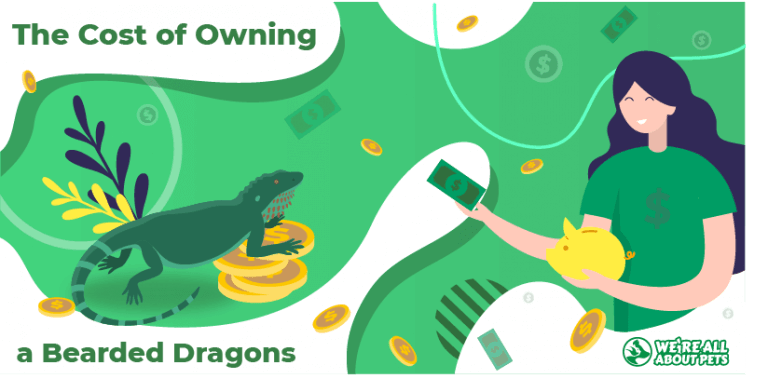
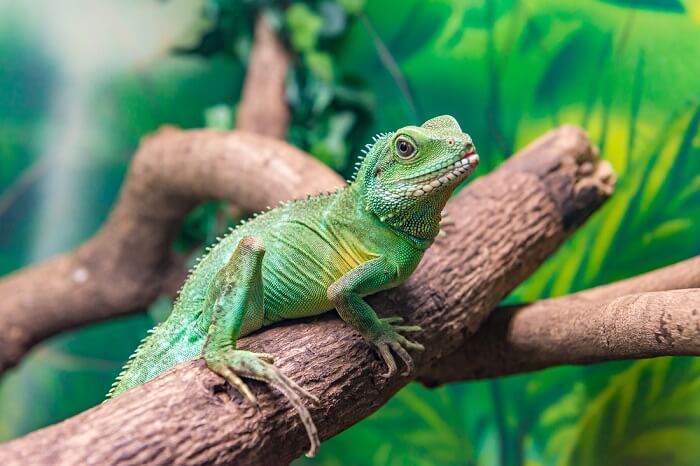
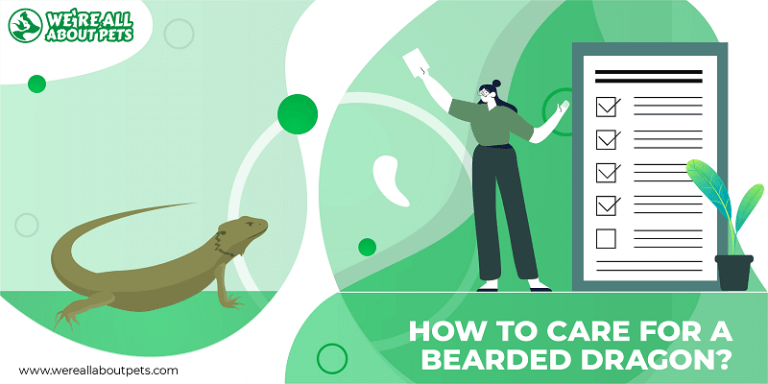
Kriss
I came here to look for simple quick read on my feature roommate. I already have a tortoise for over 10+ And counting! Im definitely confident and ready to get my bearded baby!
Patricia Zuniga
My Beardie was the Absolutely Best thing in my life. I loved her & she was my constant companion & slept on my pillow every night. I can't think of a better pet to have or to love then a beardie. I sincerely hope that U will love your Beardie as much as I loved my Georgie. I no longer have her but I carry her in my heart ♥️ now & I always will. If U do get a Beardie , I really hope that U love him as much as I did mine. Good Luck & God Bless.